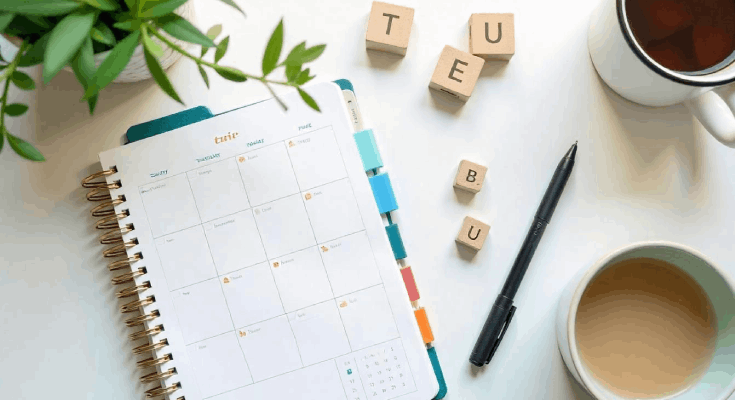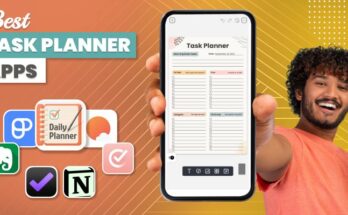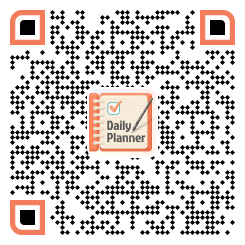How to organize your day without feeling overwhelmed? Start with a simple plan, time blocking, and just a few priorities. Use daily planner templates to add structure with ease. With strong routines, clear boundaries, and space for the unexpected, you’ll stay productive and balanced, without burning out.
If you’re feeling pulled in ten directions or like your day disappears without much to show for it, you’re not alone. In this guide, you’ll learn exactly how to organize your day effectively using practical steps and planning hacks that don’t feel overwhelming.
How to Organize Your Day: Step-by-Step Guide
1. Build Strong Routines to Frame Your Day
2. Use Time Blocking to Structure Your Day
3. To-Do Lists: Keep Them Short and Sweet
4. Minimize Distractions: Guard Your Focus
5. Incorporate Self-Care: Recharge Regularly
6. Start with Purpose: Set Daily Intentions
7. Handle the Unexpected: Stay Flexible
8. Delegate or Outsource: Share the Load
9. Prioritize with the 1-3-5 Rule
10. Boost Focus with the Pomodoro Technique
11. Tidy Your Physical Space for Mental Clarity
Step-by-Step Strategies to Organize Your Day
Here’s how I (and many others) organize our days in a way that feels focused, productive, and less stressful. Try them out—you might be surprised at how much more control you’ll feel.
👉 Watch the video below to see PlanWiz in action:
Ready to take control of your schedule? Explore more templates and start planning with PlanWiz today.
1. Build Strong Routines to Frame Your Day
When you started building solid routines, your entire day felt more anchored. Routines serve as bookends; they help you begin and end your day with intention.
How can you Do It?
- Wake up at the same time daily and stretch for a few minutes.
- Review your top 3 priorities for the day.
- Try a quick mindfulness activity like deep breathing or journaling.
- Unplug from screens 30 minutes before bedtime.
- Reflect on your day and prep tomorrow’s task list.
Example: David, a remote project manager, starts his day with light movement and a calendar check, ending it by setting priorities for tomorrow. These simple routines help him stay focused during busy weeks.

Tip: Don’t overthink it. Routines are meant to simplify, not complicate. Choose 2–3 actions that serve your energy and stick with them consistently. Over time, they become automatic anchors that bring clarity and calm to your daily rhythm.
Read More: How to Use a Daily Planner App to Create Morning and Evening Routines
2. Use Time Blocking to Structure Your Day
Time blocking helps organize your day by assigning specific time slots to tasks, creating a daily schedule that minimizes distractions and maximizes focus. Using an online timetable maker can make this process easier and more efficient.
How can you Do It?
- Break your day into time chunks (e.g., 9–10 a.m. for emails, 10–12 for deep work).
- Align tasks with your energy levels.
- Include short breaks and buffer time.
- Review your schedule every night to adjust for the next day.
Example: Lisa, a student, blocks her day: 8–9 a.m. (morning routine), 9–11 a.m. (class), 11 a.m.–1 p.m. (study), 1–2 p.m. (lunch), 2–4 p.m. (assignments). Buffer time handles group project calls, keeping her on track.
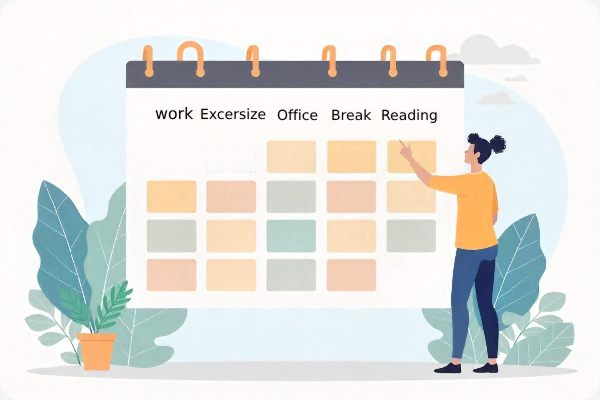
Tip: Batch similar tasks together to reduce context switching and stay in the zone longer, one of the simple strategies to manage your time wisely and make time blocks more efficient.
Read More: Top Time Management Tips Secrets For Achieving Your Goals
3. To-Do Lists: Keep Them Short and Sweet
A daily to-do list planner is your roadmap, but an overloaded list breeds overwhelm. Keeping it concise and purposeful ensures that task planning aligns with your goals and feels achievable.
How can you Do It?
- Pick 3–5 high-priority tasks.
- Break them into categories (work, personal, health).
- Be specific, write a “Draft blog intro” instead of “Work on blog.”
- Review your list the night before.
Example: Emma, a business owner, lists: 1) Respond to client emails, 2) Schedule posts, 3) Work out. Categorizing balances personal organization and work, with checkmarks feeling rewarding. To-do planner Templates make this process easier and more structured.
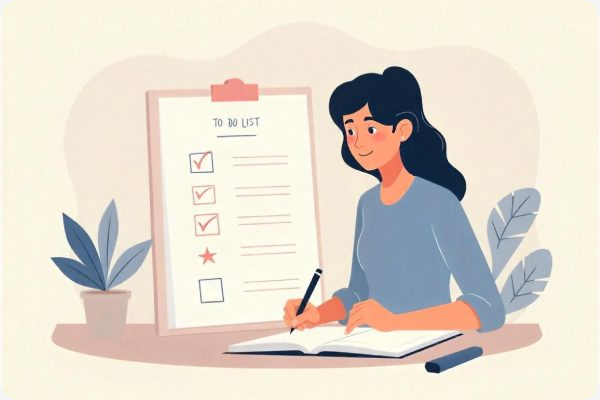
Tip: Keep your to-do list short and actionable, prioritizing only what truly needs to get done today, not everything you could do. It helps to find the right to-do list app for your daily routine to stay focused and organized.
Read More: 5 Best To-Do List Apps That Will Help You Conquer Your Day
4. Minimize Distractions: Guard Your Focus
Distractions, notifications, coworkers, and social media derail your daily schedule. Minimizing them is key to workplace productivity and sustaining productivity habits. If you can relate, try these quick steps to stay on track. Using a work schedule maker can also help you stay focused and organized throughout the day.
How can you Do It?
- Silence non-essential notifications.
- Set “Do Not Disturb” blocks.
- Use Pomodoro timers.
- Keep your workspace clutter-free.
- Let others know your availability.
Example: Mark, a designer, turns off Slack and uses a timer. A clear desk boosts his time blocking output, and he sets later chat times.

Tip: Create a “focus zone” by silencing notifications, using headphones, and keeping only the tools you need in front of you.
5. Incorporate Self-Care: Recharge Regularly
Self-care isn’t optional; it’s essential. You might treat it as an afterthought, but once you start scheduling it into your day with the help of self-care planner templates, you’ll feel more energized and less drained.
How can you Do It?
- Take 5–10-minute breaks every hour.
- Meditate, walk, or journal daily.
- Prioritize good sleep and healthy meals.
- End the day with gratitude or quiet reflection.
Example: Rachel, a teacher, adds a 10-minute meditation post-lunch, a 15-minute walk after work, and 5-minute gratitude journaling before bed. These habits keep her energized during grading season.

Tip: Treat self-care like a scheduled task, set a daily time for it, and stick to it, just like you would a meeting or deadline.
Read More: Why You Should Use a Daily Planner App to Track Your Self-Care Routine
6. Start with Purpose: Set Daily Intentions
When you start your day with purpose, everything feels more meaningful. Using goal planner templates can help you stay focused on what truly matters. Try it, you’ll feel more aligned and less like you’re just going through the motions.
How can you Do It?
- Think about 1–2 bigger goals.
- Set a daily intention (e.g., “Make progress on my project”).
- Choose tasks that match that intention.
- Write it down and revisit it midday.
Example: Mia, a marketer, aims to grow her skills. Her intention: “Learn something new.” She prioritizes a 30-minute course over file organization, staying motivated and focused in her organization.
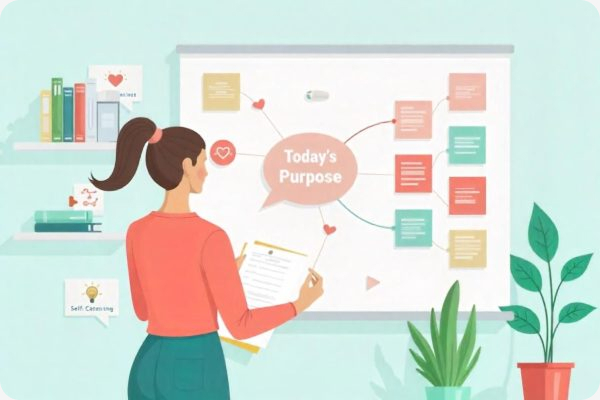
Tip: Begin your day by writing down one intention or goal. This gives your actions direction and helps filter out low-value distractions.
Read More: Best Daily Planner App Features for Tracking Long-Term Goals
7. Handle the Unexpected: Stay Flexible
Plans change, it’s life. But you can learn to roll with it by building in buffer time and having a backup plan. Using agenda templates can help you organize your day effectively, while if-then planning keeps you flexible and promotes stress reduction.
How can you Do It?
- Build in 30–60 minutes of buffer time.
- Use if-then planning: “If a meeting runs late, then I’ll push this task.”
- Quickly reassess your priorities.
- Keep a short list of low-energy filler tasks.
Example: Claire, a manager, schedules a 45-minute buffer after lunch. When a client calls, she uses if-then planning: “If the call takes 30 minutes, then I’ll move my report to tomorrow.” This keeps her day on track.

Tip: Leave margin in your schedule, build in 30–60 minutes of “just in case” time so disruptions don’t throw off your entire day.
Read More: Daily Agenda Planner Template with Priorities & To-Do List sections
8. Delegate or Outsource: Share the Load
You might try to do it all, but when you start delegating and use task planner templates to organize and prioritize, you’ll gain back time for what truly matters.
How can you Do It?
- Identify low-value tasks (e.g., organizing files).
- Delegate to a teammate, family member, or assistant.
- Use tools to automate (like PlanWiz for scheduling).
- Set clear instructions.
Example: Tom delegates email management and uses automation to save two hours a day. Imagine what you could do with that extra time.

Tip: Focus your energy where it counts. Ask, “Is this the best use of my time?” If not, delegate or use an app like PlanWiz to simplify it.
9. Prioritize with the 1-3-5 Rule
The 1-3-5 rule balances your day by focusing on one big task, three medium, and five small tasks, preventing overload and enhancing task prioritization. When you feel overwhelmed, this rule can help you simplify. Use it to bring more balance and clarity to your day.
How can you Do It?
- Pick one major task (e.g., report).
- Choose three medium tasks (e.g., emails).
- List five small tasks (e.g., call).
- Plan based on your energy levels.
- Adjust if your priorities change.
Example: Anna, a student, plans: one big (essay), three medium (readings, quiz prep, email), five small (texts, calendar, notes, bill, lunch). Her day feels manageable.
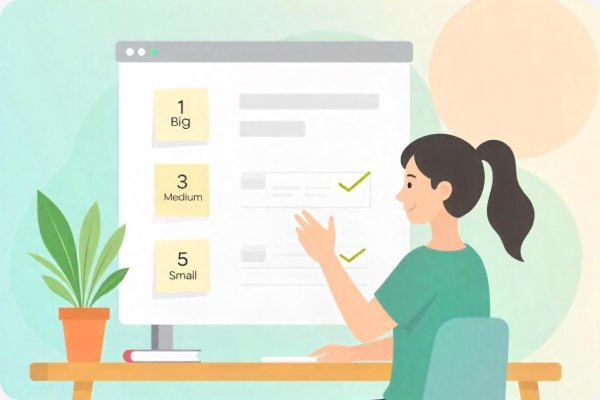
Tip: Use the 1-3-5 rule to set realistic expectations; it helps you focus on what truly matters while still making room for smaller wins.
Read More: Task Prioritization: 7 Vital Steps To Empower Your Workflow
10. Boost Focus with the Pomodoro Technique
Ever struggle to concentrate for long? You’re not alone. But once you discover Pomodoro, you might just get hooked too. The Pomodoro technique uses 25-minute sprints with breaks to maximize focus. It’s a smart way to organize your day and boost workplace productivity without fatigue.
How can you Do It?
- Choose a task and set a 25-minute timer.
- Work without distractions.
- Take a 5-minute break.
- After four cycles, take a longer break.
- Track your progress.
Example: Sam, a writer, uses four Pomodoro to draft articles, breaking to stretch. He stays focused and refreshed, avoiding burnout.
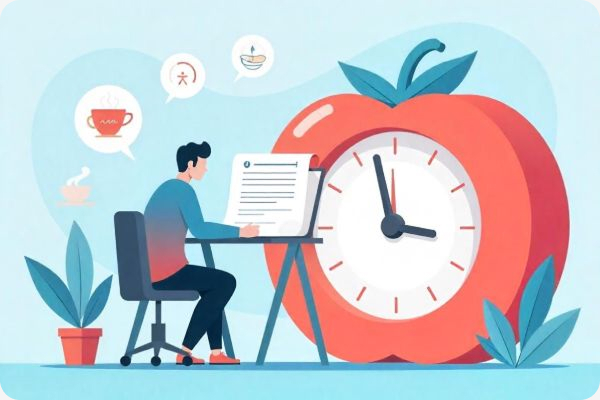
Tip: Use a simple timer and stick to it. This visual cue reinforces the habit and helps you stay committed to short bursts of focus. Pairing this with planner templates can make your schedule more structured and effective.
11. Tidy Your Physical Space for Mental Clarity
Your environment matters more than you think. When your space is clean, your mind feels sharper and more focused. A cluttered workspace clouds your mind, but physical space organization with quick tidying boosts mental clarity and productivity.
How can you Do It?
- Spend 5 minutes tidying daily.
- Keep only the essentials on your desk.
- Use organizers to prevent clutter.
- Declutter weekly.
- Follow the “one-minute rule” (if it takes less than a minute, do it now).
Example: Liam, a designer, clears his desk before work each morning. I’ve picked up that habit too, and it helps me focus better.

Tip: End your workday with a quick reset—clear your desk and prep for tomorrow to start fresh and avoid morning overwhelm. Using ADHD planner templates can support this routine by helping you stay organized and reduce next-day stress.
Read More: Why an ADHD-Friendly Daily Planner App Is a Game-Changer for Mental Clarity
Final Thoughts
At the end of the day, organizing your life isn’t about being perfect; it’s about being intentional. You don’t need to master everything at once. Start with one or two strategies, like time blocking, a focused to-do list, or scheduling self-care. Small, consistent steps can help you feel more in control, balanced, and productive every day.
Remember, tools like PlanWiz can support your journey, helping you structure your routines and prioritize what truly matters. So let’s stop feeling overwhelmed and start taking action, one well-planned day at a time. Ready to take control? Download a free daily planner template and start organizing with purpose today.
People Also Ask
Start by identifying your top priorities and choosing 2–3 routines that align with your energy. Then, block your time using a planner or app like PlanWiz to stay on track.
The best way is to combine structure with flexibility. Use time blocking, limit distractions, and set purposeful goals with tools like the Pomodoro technique or the 1-3-5 rule.
Incorporate self-care into your schedule. Take breaks, get enough sleep, and don’t try to do everything yourself — delegate or automate low-value tasks.
Start small. Build habits around planning at the same time each day. Reflect nightly to stay accountable and refine your system.
Time blocking helps reduce decision fatigue, keeps you focused on one task at a time, and ensures your most important tasks get done.

